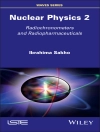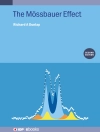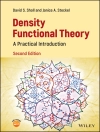Now expanded by 15% to include more details on electron structure computations, recent developments in density matrix theory, mixed quantum-classical methods for dynamic simulations and more on transient spectroscopy, this book provides a unified description of different charge and energy transfer phenomena in molecular systems.
Adopting an easy-to-follow style, making even complex concepts understandable and applicable, the authors manage to bridge the regimes of coherent and dissipative dynamics and thus establish the connection between classic rate theories and modern treatments of ultrafast phenomena. Starting from microscopic models, the common features of the different transfer processes are highlighted with applications ranging from vibrational energy flow in large polyatomic molecules, via the motion of protons in solution, right up to the concerted dynamics of electronic and nuclear degrees of freedom in molecules and molecular aggregates. Supplementd by electronic tutorials including exercises based on the Mathematica program package.
With its knowledge a necessary prerequisite for realizing applications in molecular electronics, photovoltaics, and semiconductor physics, this is the one-stop resource for physicists and chemists working experimentally or theoretically on molecular processes.
表中的内容
I NTRODUCTION
ELECTRONIC AND VIBRATIONAL MOLECULAR STATES
Introduction
Molecular Schrödinger Equation
Born-Oppenheimer Separations
Electronic Structure Methods
Potential Energy Surfaces
Adiabatic versus Diabatic Representation of the Molecular Hamiltonian
Condensed Phase Approaches
Supplement
DYNAMICS OF ISOLATED AND OPEN QUANTUM SYSTEM
Introduction
Time-Dependent Schrödinger Equation
The Golden Rule of Quantum Mechanics
The Nonequilibrium Statistical Operator and the Density Matrix
The Reduced Density Operator and the Reduced Density Matrix
Quantum Mater Equation
The Reservoir Correlation Function
Reduced Density Matrix in Energy Representation
Coordinate and Wigner Representation of the Reduced Density Matrix
The Path Integral Representation of the Density Matrix
Hierarchy Equations of Motion Approach
Coherent to Dissipative Dynamics of a Two-Level System
Trajectory-Based Methods
Generalized Rate Equations: The Liouville Space Approach
Supplement
INTERACTION OF MOLECULAR SYSTEMS WITH RADIATION FIELDS
Introduction
Absorption of Light
Nonlinear Optical Response
Field Organization and Spontaneous Emission of Light
VIBRATIONAL DYNAMICS: ENERGY REDISTRIBUTION, RELAXATION, AND DEPHASING
Introduction
Intramolecular Vibrational Energy Redistribution
Intermolecular Vibrational Energy Relaxation
Polyatomic Molecules in Solution
Quantum-Classical Approaches to Relaxation and Dephasing
INTRAMOLECULAR ELECTRONIC TRANSITIONS
Introduction
The Optical Absorption Coefficient
Absorption Coefficient and Dipole-Dipole Correlation Function
The Emission Spectrum
Optical Preparation of an Excited Electronic State
Internal Conversion Dynamics
Supplement
ELECTRON TRANSFER
Classification of Electron Transfer Reactions
Theoretical Models for Electron Transfer Systems
Regimes of Electron Transfer
Nonadiabatic Electron Transfer in a Donor-Acceptor Complex
Bridge-Mediated Electron Transfer
Nonequilibrium Quantum Statistical Description of Electron Transfer
Heterogeneous Electron Transfer
Charge Transmission through Single Molecules
Photoinduced Ultrafast Electron Transfer
Supplement
PROTON TRANSFER
Introduction
Proton Transfer Hamiltonian
Adiabatic Proton Transfer
Nonadiabatic Proton Transfer
The Intermediate Regime: From Quantum to Quantum-Classical Hybrid Methods
Proton-Coupled Electron Transfer
EXCITATION ENERGY TRANSFER
Introduction
The Aggregate Hamiltonian
Exciton-Vibrational Interaction
Regimes of Excitation Energy Transfer
Transfer Dynamics in the Case of Weak Excitonic Coupling: Förster Theory
Transfer Dynamics in the Case of Strong Excitonic Coupling
Optical Properties of Aggregates
Excitation Energy Transfer Including Charge Transfer States
Exciton-Exciton Annihilation
Supplement
INDEX
关于作者
Volkhard May studied physics at Humboldt University, Berlin, and received his Ph.D. in Theoretical Physics in 1981, and his Habilitation at the College of Education, Güstrow, in 1987. He worked in the Department of Biophysics at the Institute of Molecular Biology in Berlin from 1987 to 1991, and has been a senior researcher at the Instiute of Physics, Humboldt University, since 1992. His current research activities focus on the theory of transfer phenomena in molecular nanostructures.
Oliver Kühn studied physics at Humboldt University, Berlin. After receiving his Ph.D. degree in Theoretical Physics in 1995, he worked as a postdoc first at the University of Rochester, USA, then at Lund University, Sweden. From 1997 to 2007, Prof. Kühn has been a senior researcher at the Institute of Chemistry, Free University Berlin, where he earned his habilitation in 2000. Since 2008 he is a Professor of Theoretical Physics at the University of Rostock. His current research interests lie in ultrafast spectroscopy and dynamics of condensed phase systems such as biomolecular hydrogen bonds and excitons in molecular aggregates.












